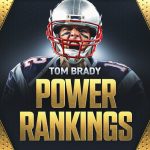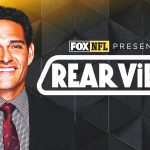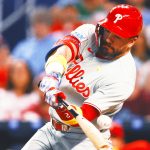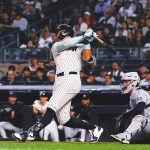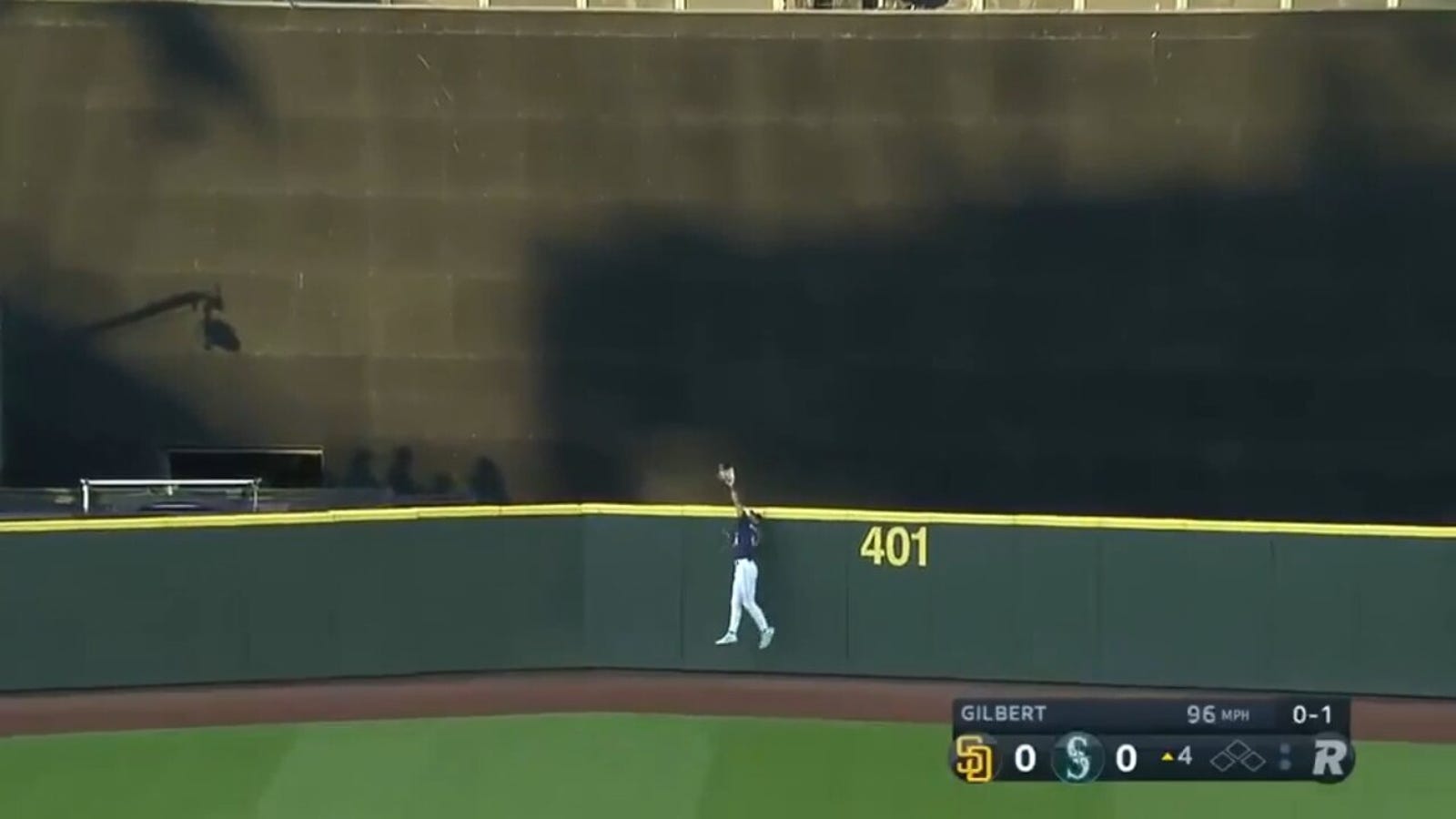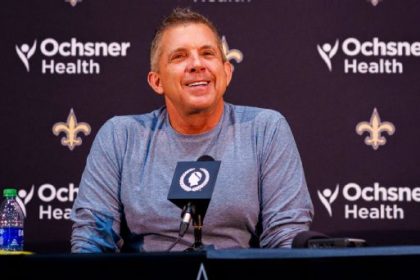Every week, Jordan Shusterman examines one thing from each MLB division that we’ve learned from the latest action.
AL East: McClanahan is a massive loss for Tampa Bay
Having already lost Drew Rasmussen and Jeffrey Springs to season-ending surgeries earlier this year (and Shane Baz last September), the Rays suffered their toughest blow of 2023 yet with the news that All-Star lefty Shane McClanahan likely will not pitch again this season because of a forearm injury. First and foremost, this is an immense disappointment for McClanahan, a Cy Young candidate whose continued ascent into the inner-circle of the game’s aces will now seemingly be derailed for a considerable amount of time. For the Rays, it’s another challenging hurdle to navigate as the stakes in the AL East race continue to elevate with each passing day.
So, where does Tampa Bay turn from here? There’s no replacing a pitcher like McClanahan, especially not in the middle of the season. That said, the acquisition of Aaron Civale from the Guardians is surely looking like a prudent one if only from a pure innings-eating perspective. He wasn’t especially sharp in his debut against Detroit over the weekend, but his starts now carry even more weight down the stretch as his ability to go deep into games will be vital in an effort to keep the rest of the staff fresh.
ADVERTISEMENT
The Rays’ depth is about to be seriously tested beyond Civale, Zach Eflin and Tyler Glasnow, who’s looked tremendous of late. Zack Littell, a journeyman reliever, was solid in two starts on the club’s most recent road trip. Top prospect Taj Bradley was optioned when Civale was acquired but could re-emerge as a rotation option as October approaches. Veteran Erasmo Ramirez, released by the Nationals in June, was called up from the minors last week and could provide length as a starter or a bulk reliever. Jacob Lopez is a crafty lefty with a 1.94 ERA in 12 Triple-A starts, but he’s more funk than flash and probably won’t be expected to start important games any time soon. The Rays have been getting outs from unexpected places for years, but this is going to be a challenge.
The loss of McClanahan will likely be felt the most if and when Tampa Bay is preparing for a playoff series. As solid as Eflin has been this year — and as good as he looked in a relief role in the 2022 postseason — Glasnow is the only pitcher left on this staff with considerable experience starting big games in October. (Plus, you might be surprised to learn, even he has never topped 14 starts in the regular season, and he’s currently at 12.) But if we assume some order of Glasnow and Eflin get the ball in the first two games of a series, who’s starting Game 3? Will it be Civale? Will they turn back to the rookie Bradley and bet on the upside? Might they pivot back to their old ways and roll out an opener or a full-blown bullpen game?
Heading into this season, the Rays appeared to have assembled their deepest rotation of starters in years. With this maddening rash of injuries on the mound continuing, they may now be forced to go back to deploying their pitchers in more creative ways down the stretch, much less in the playoffs.
AL Central: López has been great for the Twins, too
The Pablo López–Luis Arráez swap was always going to be a fascinating one to monitor. And while Arráez has understandably gotten far more headlines for his heroic hit-collecting ventures, it’s worth highlighting just how good López has also been for his new team. Minnesota’s lineup has certainly lacked a consistent on-base presence of Arráez’s ilk, but López has fronted a Twins rotation that has emerged as one of baseball’s best. Lopsided trades might generate spicier reflective discourse, but win-win deals can be fun, too. So far, this has been exactly that.
I’ll be honest, I was skeptical that there was substantial untapped upside in López as a pitcher. I liked what he brought to the table, but with middling velocity and an average whiff rate, he looked more like a what-you-see-is-what-you-get kind of arm: a solid mid-rotation workhorse. Well, it turns out the professional baseball team knew more than I did — how about that? — and López has leveled up in a considerable way in Minnesota.
Most notably, he’s throwing harder than ever. That’s usually a good way to get better in a hurry. López is averaging a career-high 95 mph on both his four-seamer and sinker and has thrown more 96+ mph pitches in 141.2 innings this season (126) than he had in 510 innings across five seasons coming into this year (122). In addition to the extra cheddar on his heaters, López has adjusted his overall arsenal fairly dramatically. Long known for his wicked changeup, which he used about 30% of the time, López has added a sweeper this year that he throws just about as often as the changeup (now down to 20%), giving him a much more balanced five-pitch mix (along with a curveball) to attack hitters with. The results have come in spades, with his strikeout rate up to a career-high 30%, a sizable step up from the 23.2% he’d posted over his previous five seasons.
Seven scoreless innings Monday against Detroit brought López’s season ERA down to 3.81, a mark that undersells just how good he’s actually been; his 3.28 FIP is tied with George Kirby for 10th-lowest among qualified MLB starting pitchers, while his 23.7% K-BB% ranks fourth. López’s 3.3 fWAR is tied with revered aces Gerrit Cole and Logan Webb for eighth. He’s a frontline guy now, full stop.
When López was acquired, I viewed him as a pitcher certainly worthy of getting the ball for a potential start in October, but not necessarily one I’d be ecstatic or overly confident about. The strides he’s made this year have shifted my expectations. Should the Twins win the AL Central and host, they should feel great giving the ball to the right-hander in an attempt to win their first postseason game in nearly two decades. He’s been awesome.
AL West: Mariners surging thanks to J-Rod and J.P.
It should surprise no one that a huge part of Seattle’s recent run as one of baseball’s best teams since the start of July has coincided with a return to form from its face of the franchise, Julio Rodríguez. After an 0-for-5 vs. Tampa Bay dropped his season OPS to .710 on June 30, J-Rod has hit .311/.372/.496 in 32 games during which the Mariners have gone 23-9. He’s a superstar in every sense of the word, impacting the game not just with his prodigious power and prowess at the plate, but also with his 97th percentile sprint speed that enables routine stolen bases and spectacular defense that also ranks among the game’s best in center field. He’s incredible. Duh. You knew that already.
But let’s be very clear: an even bigger reason why the Mariners are in great position to return to October is their shortstop J.P. Crawford. After all the consternation over the offseason about whether Seattle should pursue one of the big four free-agent shortstops (Carlos Correa, Trea Turner, Xander Bogaerts, Dansby Swanson), it’s Crawford — whom Seattle already extended last year with a $51 million deal through 2026 — who ranks fourth among all MLB shortstops in wRC+ and ahead of every member of the aforementioned quartet that signed for nearly a combined $1 billion this past winter.
A Gold Glove winner in 2020, Crawford has long been known more for his slick fielding and an offensive profile built around excellent plate discipline more than impacting the baseball with force. But while fans spent this winter talking about how Crawford should slide over to second base in deference to a more proven shortstop slugger, Crawford went to work getting stronger and specifically training to improve his bat speed, and in turn, his slugging potential. While his OBP skills are still firmly in place — and arguably better than ever with a career-high 14.9% walk-rate and .382 OBP that ranks third among AL hitters — Crawford now offers some respectable thump as well, posting career bests in average exit velocity, barrel% and hard-hit rate, while slugging over .400 for the first time in his career.
Advanced defensive metrics have cooled on Crawford considerably as a defender in recent years, but he certainly still passes the eye test as one of baseball’s steadiest shortstops. And in leveling up his offensive game, Crawford has gone from good to great right when the Mariners needed him the most.
NL East: Riley has validated his questionable All-Star invite
I generally have no issue with the best team in baseball being represented to an extreme degree at the All-Star Game, and this year was no different with the Braves‘ eight selections leading all teams comfortably. However, Austin Riley‘s inclusion as an NL reserve stood out as more of a reward for his track record than how he’d been playing this season. We can debate whether reputation should outweigh first-half performance when selecting All-Stars, but Riley indisputably was not playing up to the elite standard he had achieved over the previous two seasons. Among NL third baseman, he ranked 7th in wRC+ and 5th in WAR in games played before the All-Star break, behind guys like Jeimer Candelario, J.D. Davis and Spencer Steer. Riley wasn’t having a poor season by any stretch, but he certainly wasn’t playing like one of baseball’s best, like he had in 2021 and 2022.
Riley obviously didn’t need to justify his inclusion in the Midsummer Classic after the fact, but the way he’s been playing in the weeks sure has made it look that way. Since the break, Riley’s 175 wRC+ and 1.3 fWAR aren’t just best among NL third basemen, but top 20 in all of MLB. His 10 home runs are tied with teammate Matt Olson for the most in the majors over this span, as well. It’s not that I doubted Riley was still capable of such a scorching stretch, but it’s been nice to see him remind everyone that he, too, is one of the best hitters in baseball, not just his MVP front-runner teammate Ronald Acuna Jr. or his corner infielder counterpart in Olson.
When a team is as deep and talented as the Braves, even stars like Riley can sometimes get lost in the shuffle. This recent hot streak has pushed him back to the forefront of the conversation surrounding baseball’s best club.
NL Central: Candelario is a Cub once again
He didn’t get the All-Star nod over Riley, but Candelario’s excellent play in the first half with Washington was rewarded differently: a trade back to the team he originally came up with in Chicago. For the Cubs to go from probable sellers to landing arguably the most impactful rental bat available at the deadline in the course of a week was a stunning sequence to watch, and now Candelario has the chance to play a major role in restoring playoff baseball to the ballpark he briefly called home in Wrigley Field.
Signed by the Cubs for $500,000 out of the Dominican Republic way back in 2010, Candelario steadily climbed the minor-league ladder over the next half-decade, demonstrating an advanced approach and consistent production at every stop. There was never enough power to project star potential, but by the time Candelario reached the upper minors in 2016, he was a fringe top-100 prospect knocking on the door of the big leagues. There was one problem: the Cubs were going for their first World Series title in 108 years and there was a guy playing his position who was in the midst of an MVP season named Kris Bryant.
With Bryant not going anywhere anytime soon, Candelario was shipped at the 2017 trade deadline to Detroit, where he eventually blossomed into exactly the kind of solid big-league hitter many evaluators projected him to be as a Cubs prospect. An uncharacteristically dismal 2022 campaign led to his non-tender by rebuilding Detroit, but Candelario promptly latched on with another rebuilding club in Washington, which still believed in the kind of hitter — and eventual trade bait — he could be.
If we believe Nationals general manager Mike Rizzo when said he had eight suitors for Candelario with the deadline approaching, the Cubs clearly had to step up to make this reunion happen. It’ll be interesting to see how the Cubs choose to deploy Candelario both defensively and in the lineup, as his switch-hitting and ability to play both corners do offer some flexibility for manager David Ross. (Ross, incidentally, was the starting catcher for the Cubs in Candelario’s big-league debut.)
Candelario’s going to hit further down in the order than the 3 or 4-hole he occupied in Washington, but that’s to be expected. I’m more intrigued by whether the Cubs deem him more valuable at first base where their veteran additions Eric Hosmer and Trey Mancini flopped, or at third base where Patrick Wisdom and Nick Madrigal offer maddeningly inconsistent production for polar opposite reasons. No matter the details, Candelario’s return to the Cubs has a chance to be far more than just a feel-good story if Chicago can ultimately secure a postseason spot. And that’s a sentence that felt awfully unlikely for either team or player as recently as July 20, when the Cubs’ playoff odds were as low as 6.3%. Baseball!
NL West: Rosario immediately playing his part with Dodgers
Coming off two straight years of league-average offensive production as a reasonably competent defensive shortstop, I was decently bullish on Amed Rosario entering 2023, especially with a potentially lucrative free agency looming this winter. I tabbed Rosario as one of the more attractive non-Shohei Ohtani position players available in a tremendously thin free-agent class for hitters, assuming that even if he held serve as the player he was the previous two seasons, he’d have plenty of suitors as a shortstop hitting the market entering his age-28 season.
Or not.
Rosario’s “platform” year was not exactly putting him in position for a big-time payday. The bottom fell out on his precarious offensive profile — predicated on putting a ton of balls in play and using his speed to rack up hits and extra bases — and his defensive metrics plummeted from average to abysmal across the board. He was hurting Cleveland more than he was helping, not to mention the impact it had on his potential earnings this winter. Things were not going well.
And yet, thanks to respectable splits against southpaws and the athleticism to move around the field, Rosario was still appealing enough to be acquired by the Dodgers before the deadline in tandem with an oddly similar player in Kiké Hernández. The Guardians reasonably opted to prioritize playing time for younger infielders like Gabriel Arias, Tyler Freeman and Brayan Rocchio, concluding Rosario’s up-and-down tenure in Cleveland since arriving from New York in the Francisco Lindor blockbuster.
Now in a new role with a new team known for maximizing players whose careers have fallen off track, can the Dodgers rejuvenate Rosario’s game in time for him to cash in this winter? All they care about is whether he can help them compete for another World Series title, of course — and he’s already contributed to some victories in Dodger blue — but it’s a sneaky subplot to follow down the stretch. With Hernández and Miguel Rojas still in the fold, Rosario won’t be asked to be the starting shortstop batting in the 2-hole every day like in Cleveland — or anything close to it. He’ll play mostly second base, with some time at shortstop sprinkled in and hit in the bottom-third of the order against favorable pitching matchups.
The pressure is off Rosario to be a key cog that drives an offense; he can focus strictly on what he does best. That might only be the case for a few months, but I’m fascinated to see if Rosario’s talent can shine through again when put in the optimal positions to succeed, just as the Dodgers have provided for so many players in recent years.
Jordan Shusterman is half of @CespedesBBQ and a baseball writer for FOX Sports. He has covered baseball for his entire adult life, most notably for MLB.com, DAZN and The Ringer. He’s a Mariners fan living in the Eastern Time Zone, which means he loves a good 10 p.m. first pitch. You can follow him on Twitter @j_shusterman_.
MLB trending
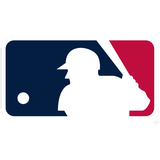
Get more from Major League Baseball Follow your favorites to get information about games, news and more

